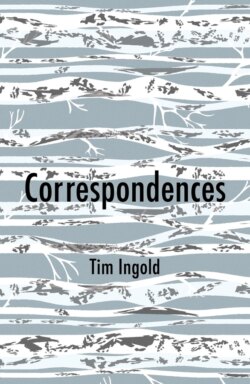Читать книгу Correspondences - Tim Ingold - Страница 12
The way of art
ОглавлениеCorresponding with as much rigour and precision as I can command, I have tried in these essays to stay close to the grain of things. I want to show that the practice of thinking we often call ‘theory’ doesn’t mean having to lift off into a stratospheric realm of hyper-abstraction, or to mingle in our imagination with concepts that have drifted so far from the ground of experience, to which they owe their origin, as to have lost all touch with it. Quite to the contrary, theoretical work can be as much grounded in the materials and forces of the inhabited world as the conduct of any other craft. To practise theory as a mode of habitation is to mix and mingle, in one’s thinking, with the textures of the world. This means, if you will, not taking literal truths metaphorically, but taking metaphorical truths literally. The theorist can be a poet. For example, inspired by the poetry of Seamus Heaney, I might compare my digging for words to the crofter’s digging for peat, and my pen to a spade.6 I would be urged on by an intuition that a deeper truth lurks within the comparison, and in my theorizing, that’s the truth I’m trying to find. And I know that I’ll have a greater chance of finding it by going to ground than by lifting off. I should pick up a spade and dig! I should think, as I do so, of what the spade is telling me about the earth, or rather of what the earth is telling me through the spade. And I can then bring the lessons I have learned to my thinking on the page.
Taking metaphorical truths literally, however, is not just the way of poetry; it is also – and perhaps above all – the way of art. The work of the artist is to embody such truths, to make them viscerally present to us, so that we can experience them in their immediacy. The majority of essays gathered here were originally written in response to artistic provocations. Some were commissioned by the artists themselves, or by the curators of their works; others were composed on my own initiative. It is not my purpose to make any judgement, aesthetic or otherwise, of the art itself. I offer no expert interpretation or analysis. I write as an amateur respondent, not a professional critic. But working in the medium of words, I have set out to insert my own voice into the correspondence. And to be honest, I have very much enjoyed doing so. It has been a relief to drop my academic persona and write with my own voice, hand and heart. Above all, I have relished the freedom both to embrace fresh ideas and to be shaken up and disturbed by them.
The twenty-seven essays making up the book are grouped into six parts. We begin in the woods, conversing with trees, then trace an arc from sea to land to sky and back down to earth. We go to ground, mix with the elements, follow lines and threads from the gatherings of nature to the pages of the book, and conclude with a plea to restore words to the hand. Although the journey itself, proceeding in gradual steps from world to words, unfolds without interruption, it is assembled out of singular elements each of which – taken on its own – has its own character and integrity. Rather like a bird’s nest, it is constructed from assorted fragments that were never designed to fit together. The contingent coherence of the nest, and the latitude it affords to its constituents, gives it a resilience thanks to which it hangs together even under the most adverse of weather conditions. Irregularity holds it fast. It is the same with this book, affording the reader the latitude to dip in at any point, to read the essays in any order, and perhaps to circle back to look at some again. Like walking in the woods, you can take any number of alternative routes. Think of the book’s pages, then, as the ground on which you walk, and of its lines as paths. Happy wandering!
